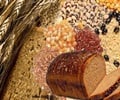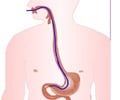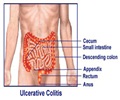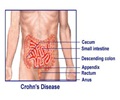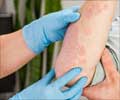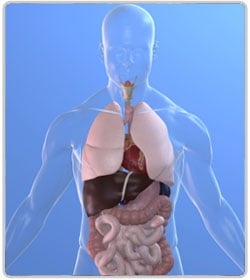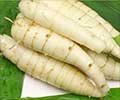Treatment of Celiac Disease
In the absence of treatment, people with celiac disease could go on to develop complications such as osteoporosis, anemia, and cancer.
A gluten-free diet is the only treatment for patients with Celiac Disease. Once patients shift to a Gluten-free diet, the symptoms of the disease gradually reduce. The intestine begins to heal with no further damage to the intestine.
A gluten-free diet would mean complete abstinence from foods containing wheat, rye, and barley. What this essentially means is that, victims of celiac disease should give-up processed foods, pasta, and cereals containing gluten. Instead of wheat flour, Celiac Disease patients can opt for bran flour.
Remember while grains contain gluten, so do some types of oats. So they are best avoided. Instead of grains, rice and its products can be a good alternative. Similarly fruits and vegetables do not contain any gluten. Non-vegetarians can also opt for meat and fish.
Gluten-free bread and pasta can be purchased from food stores. A dietician is equipped to make a Gluten-free diet plan and advice patients to recognize ingredients in foods so that they do not make the mistake of consuming edibles with gluten.
Remember that some medications also contain gluten. The services of pharmacists can be sought to verify the content of the medicines. Gluten is also used as an additive in some products such as in lipstick, therefore one must make it a point to read the product labels before purchasing cosmetic products.
People suffering celiac disease must abstain from foods containing gluten lifelong. It is to be remembered that even consuming a small quantity of gluten can damage the small intestine.
In rare cases the disease still continues despite a gluten-free diet. Sometimes the victims’ intestines are so badly damaged, a condition named as Refractory Celiac Disease where patients may need to be administered nutrients intravenously.
The American Dietetic Association in 2006 updated its recommendations for a gluten-free diet. The list is far from complete but is a starting point for people suffering from this condition. It is best to read the labels yourself and ensure that the food is free from gluten before a purchase.
| Allowed Foods | ||
| Amaranth Arrowroot Buckwheat Cassava Corn Flax Indian rice grass Job’s tears | Legumes Millet Nuts Potatoes Quinoa Rice Sago | Seeds Sorghum Soy Tapioca Teff Wild rice Yucca |
| Foods To Avoid | |
| Wheat • including einkorn, emmer, spelt, kamut • wheat starch, wheat bran, wheat germ, cracked wheat, hydrolyzed wheat protein | Barley Rye Triticale (a cross between wheat and rye) |
| Other Wheat Products | ||
| Bromated flour Durum flour Enriched flour Farina | Graham flour Phosphated flour Plain flour | Self-rising flour Semolina White flour |
| Processed Foods that May Contain Wheat, Barley,or Rye* | ||
| Bouillon cubes Brown rice syrup Candy chips/potato chips Cold cuts, hot dogs, salami, sausage Communion wafers | French fries Gravy Imitation fish Matzo Rice mixes Sauces | Seasoned tortilla chips Self-basting turkey Soups Soy sauce Vegetables in sauce |
* Most of these foods can be found gluten-free. When in doubt, check with the food manufacturer or your physician or dietician.
Source: Thompson T. Celiac Disease Nutrition Guide, 2nd ed. Chicago: American Dietetic Association; 2006. © American Dietetic

